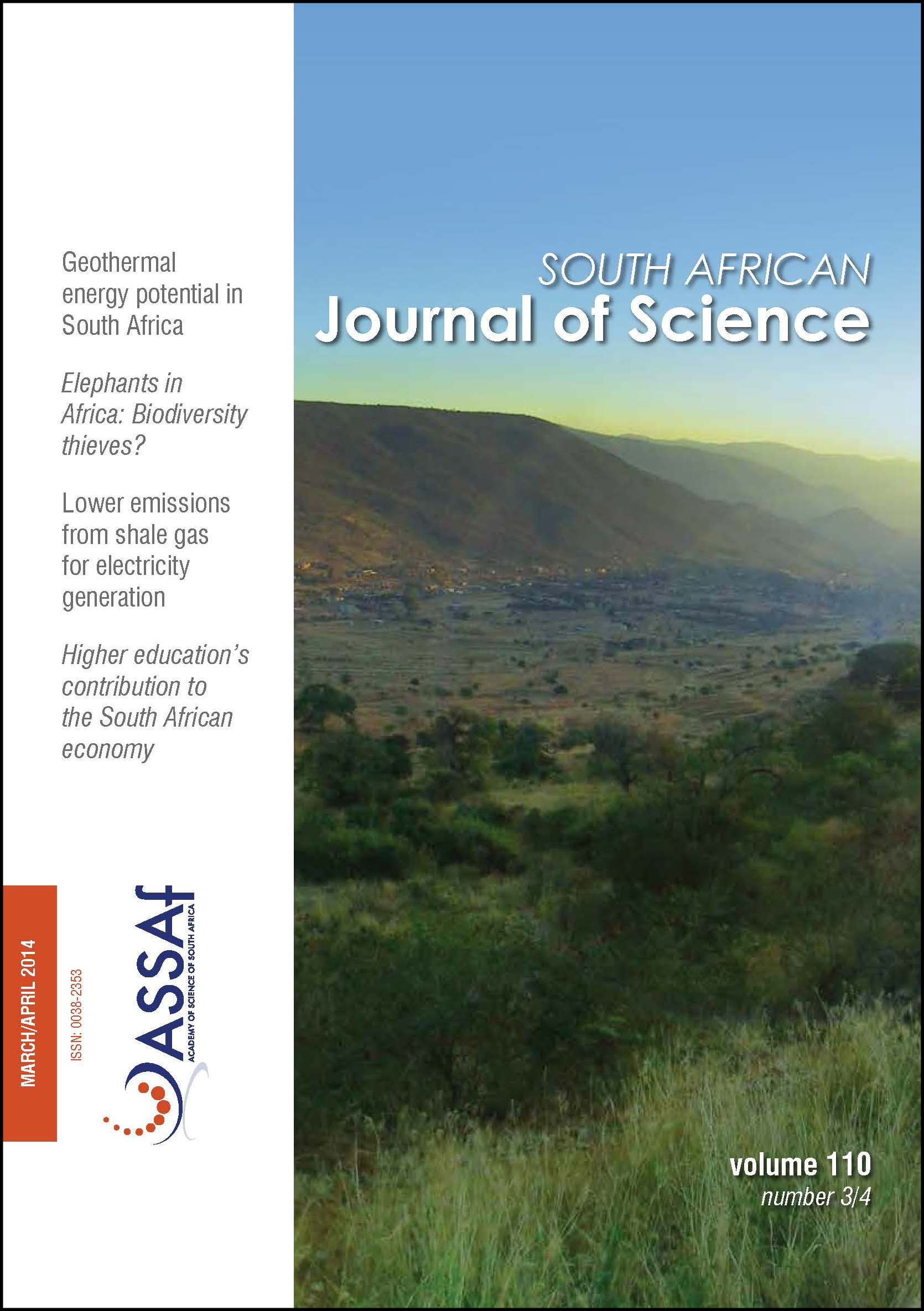Palaeomagnetic and synchrotron analysis of >1.95 Ma fossil-bearing palaeokarst at Haasgat, South Africa
DOI:
https://doi.org/10.1590/sajs.2014/20130102Keywords:
biochronology, X-ray flourescence, synchrotron radiation;, iron, primate fossils, magnetostratigraphyAbstract
Palaeomagnetic analysis indicates that Haasgat, a fossil-bearing palaeocave in the Gauteng Province of South Africa, is dominated by reversed magnetic polarity in its oldest, deepest layers and normal polarity in the younger layers. The presence of in-situ Equus specimens suggests an age of less than ~2.3 Ma, while morphological analysis of faunal specimens from the ex-situ assemblage suggests an age greater than 1.8 Ma. Given this faunal age constraint, the older reversed polarity sections most likely date to the beginning of the Matuyama Chron (2.58–1.95 Ma), while the younger normal polarity deposits likely date to the very beginning of the Olduvai Sub-Chron (1.95–1.78 Ma). The occurrence of a magnetic reversal from reversed to normal polarity recorded in the sequence indicates the deposits of the Bridge Section date to ~1.95 Ma. All the in-situ fossil deposits that have been noted are older than the 1.95 Ma reversal, but younger than 2.3 Ma. Haasgat therefore dates to an interesting time period in South African human evolution that saw the last occurrence of two australopith species at ~2.05–2.02 Ma (Sts5 Australopithecus africanus from Sterkfontein Member 4) to ~1.98 Ma ( Australopithecus sediba from Malapa) and the first occurrence of early Homo (Sk847), Paranthropus and the Oldowan within Swartkrans Member 1 between ~2.0 Ma and ~1.8 Ma.Published
2014-03-27
Issue
Section
Research Article
License

All articles are published under a Creative Commons Attribution 4.0 International Licence
Copyright is retained by the authors. Readers are welcome to reproduce, share and adapt the content without permission provided the source is attributed.
Disclaimer: The publisher and editors accept no responsibility for statements made by the authors
How to Cite
Herries, A. I., Kappen, P., Kegley, A. D., Patterson, D., Howard, D. L., de Jonge, M. D., Potze, S., & Adams, J. W. (2014). Palaeomagnetic and synchrotron analysis of >1.95 Ma fossil-bearing palaeokarst at Haasgat, South Africa. South African Journal of Science, 110(3/4), 1-12. https://doi.org/10.1590/sajs.2014/20130102
Views
- Abstract 585
- PDF 416
- EPUB 218
- XML 272












.png)